How to add drainage to a deck that is already built – decking experts reveal how to do it without ripping up all the boards
You can add drainage to a deck without taking it to pieces, and save thousands of dollars in construction fees
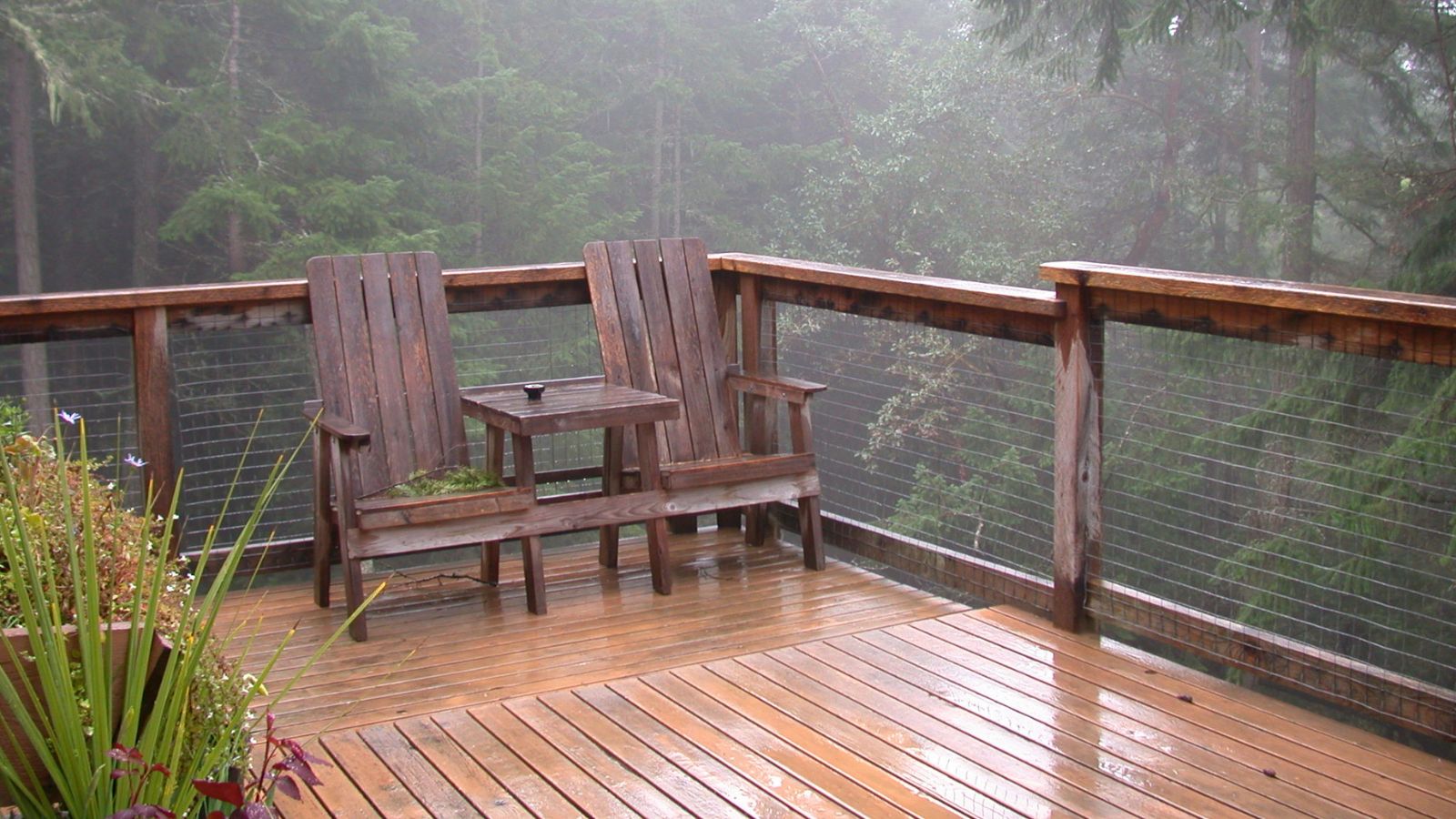

A deck is always a good addition to the yard, creating a low-maintenance outdoor space that's perfect for hosting and relaxing.
However, poor deck drainage can be a real problem. Water can rot the wood and destroy the deck. If your deck was installed incorrectly and you have to add drainage yourself, this could mean removing all the boards, or even the frame.
However, there are ways of adding drainage to your deck ideas without having to do a major renovation. I spoke to construction experts about how to add drainage to a deck that already exists. Here are the four key things you need to be aware of.
1. Work out if you need to remove the deck
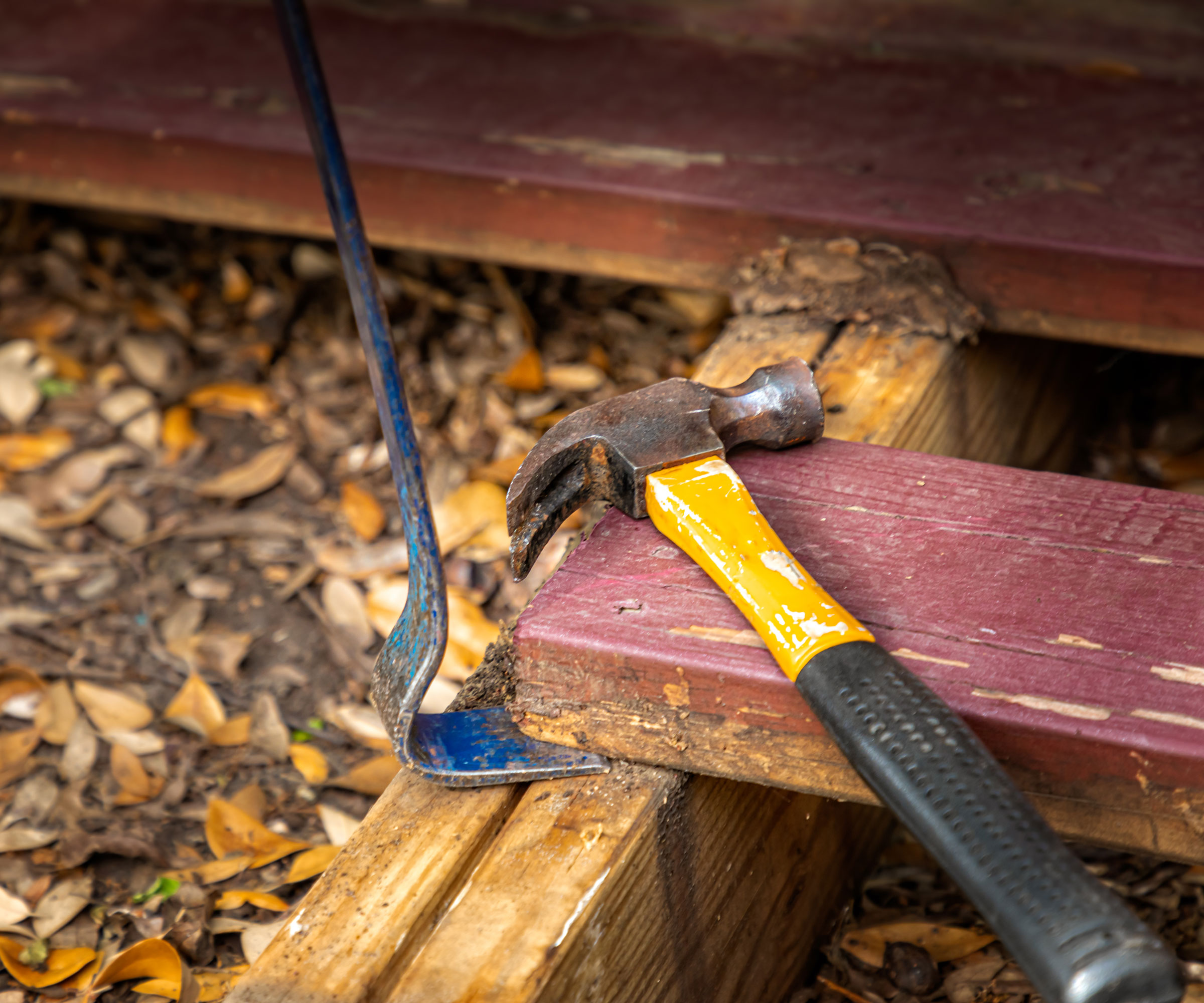
Firstly, you need to work out how much of your deck you need to remove. There are lots of clever ways of adding drainage to a deck that already exists, but you need to assess what you need. Thankfully, you rarely need to rip up the whole deck.
Deck expert Scott Paul says: 'The first thing to determine is whether you need to remove the whole deck to add drainage. You don't necessarily need to, but partial disassembly may be required depending on your deck type.'
Construction expert Mark Lumpkin agrees and explains: 'Targeted retrofits rarely require complete deck removal to provide adequate drainage. For instance, drainage channels could be incorporated into the current framework to prevent pooling without full rebuild time or cost.'
A trickier issue is if your deck doesn't slope. Decks should be built with a tiny slope, but many are built level. Scott explains: 'You may also have to add a slope to help facilitate drainage. The recommended slope is 1/4 inch per 12 horizontal feet. This is a subtle incline that will barely be noticeable, but will help water flow away from your home.'
However, this fix usually requires removing all of the boards, and while you can keep the frame of the deck in place, this can be a pretty big job.

Scott has worked in pressure washing and exterior wood since 1993. A deck expert, Scott and his Deck Cleaning Michigan company have restored over 10,000 decks in the Metro Detroit area. He has become an authority in the deck restoration industry and has contributed to numerous wood restoration forums and informative sites.

Mark has decades of hands-on experience in construction, tiling, flooring, cabinetry, siding, and painting. He has set up over 500 market-leading short-term rental spaces.
2. Use undermount drainage for elevated decks
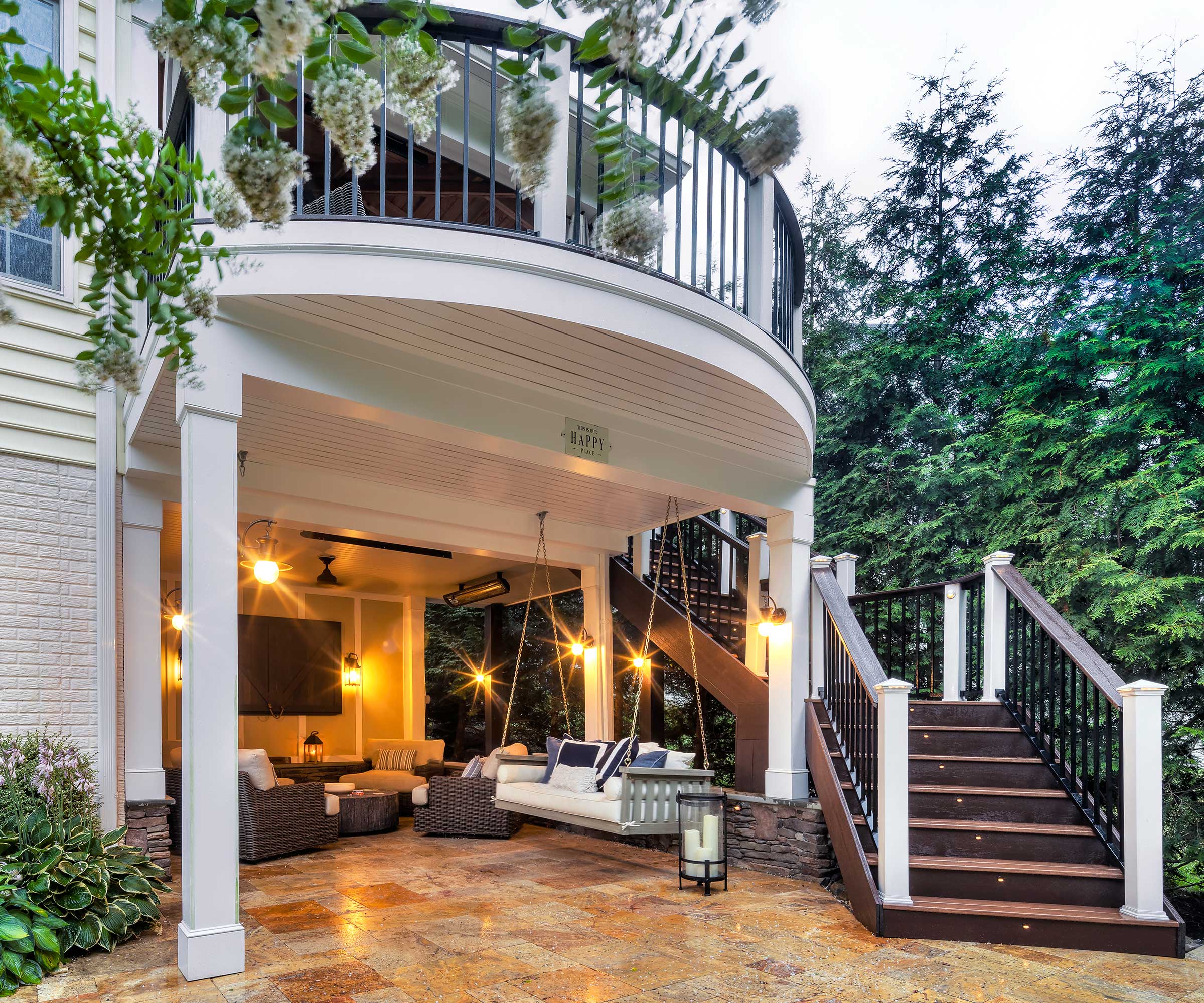
There are two main ways of adding drainage to an existing deck: overmount and undermount drainage. If you have an elevated deck above the yard your best option is undermount.
Mark Lumpkin explains: 'This method of drainage uses hidden channels or perforated systems placed underneath the deck boards, which aids in the effective collecting of water and directing of it away from the building. I remember routing drainage pipes beneath a suspended deck on a job I worked on, giving it a smooth appearance while significantly reducing moisture buildup below the deck.'
This is much easier to install than overmount drainage because you don't need to remove any boards. The panels are fixed to the joists underneath the deck, directing water away to a downspout.
Scott Paul says: 'The installation process isn't too extreme. Prep and clean the area beneath your deck, then install support tracks or hangers to support deck joists. After that, attach drainage panels or troughs to the supports to achieve optimal slope angle. Install the gutters at the low end and then connect your downspouts to direct the water away to prevent foundational damage.'
You can buy an underdeck ceiling trough from Home Depot . This creates drainage that should ensure your deck is carrying water away from the deck and your house.
3. What to plan for if you need to add overmount drainage
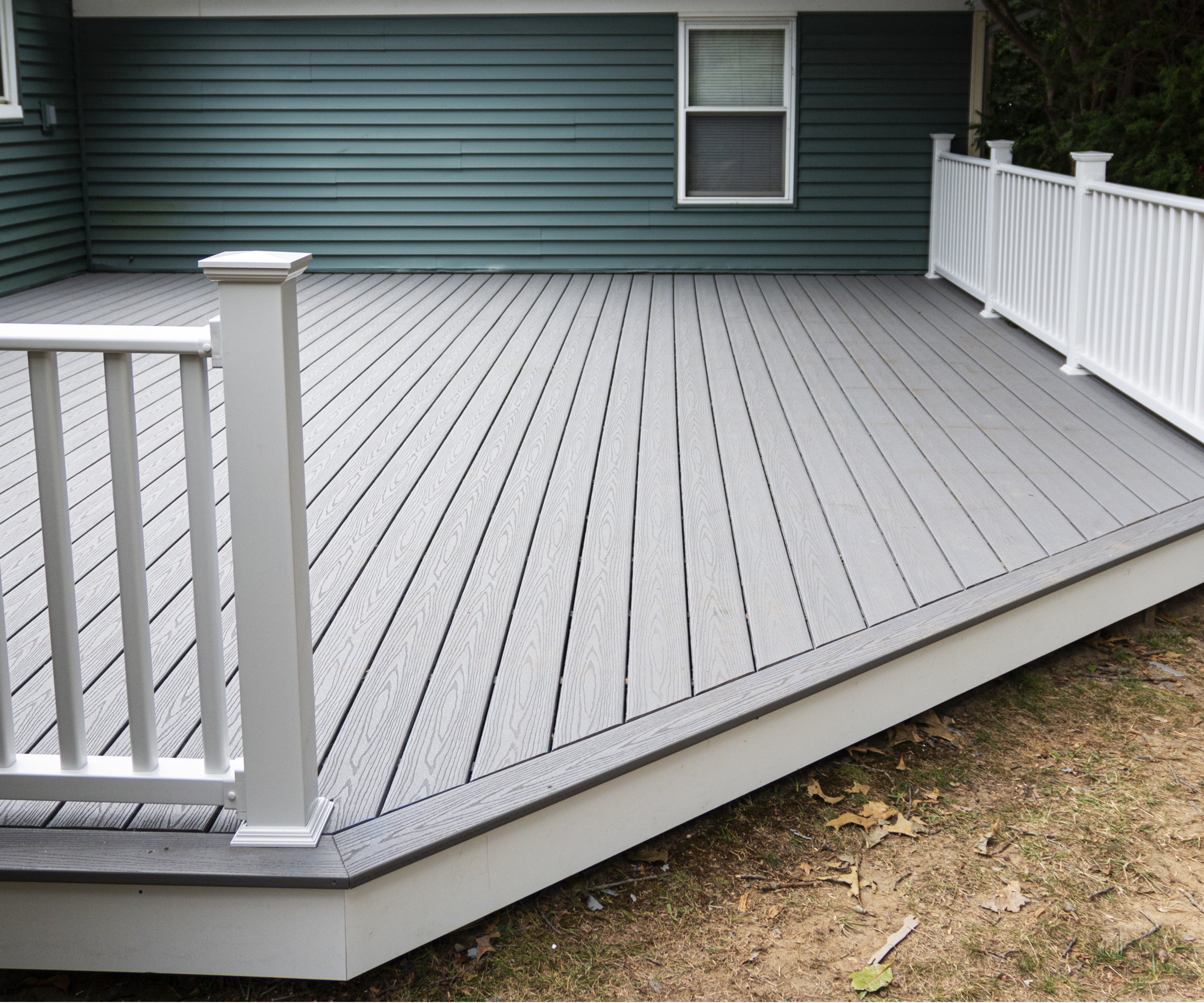
If your deck is at ground level, you have to use overmount drainage. It's called 'overmount' drainage because it's mounted over the joists of your deck, and getting to these requires removing all the boards.
Mark Lumpkin explains that: 'Overmount drainage is when drainage elements are integrated directly onto the deck surface, usually through concealed channels or integrated gutter systems that catch and redirect the water.'
This means overmount drainage is trickier to install. Scott Paul says: 'Remove all deck boards if you're using your existing deck to expose the joists. Then, measure the entire deck area to determine the amount of drainage material needed in the form of waterproof membranes or drainage panels.
'After that, install the drainage membrane over the joists and effectively clean the area. You then need to create a proper slope to direct water towards drainage points and add gutters and downspouts at the low end. Finally, reinstall your deck boards over the membranes and seal any holes with waterproof sealant.'
This method can be expensive and time-consuming. Scott Paul says: 'It should be noted that this method is far less common, and requires extensive planning that can call for heavy modifications to your deck.'
4. External drainage is an additional option
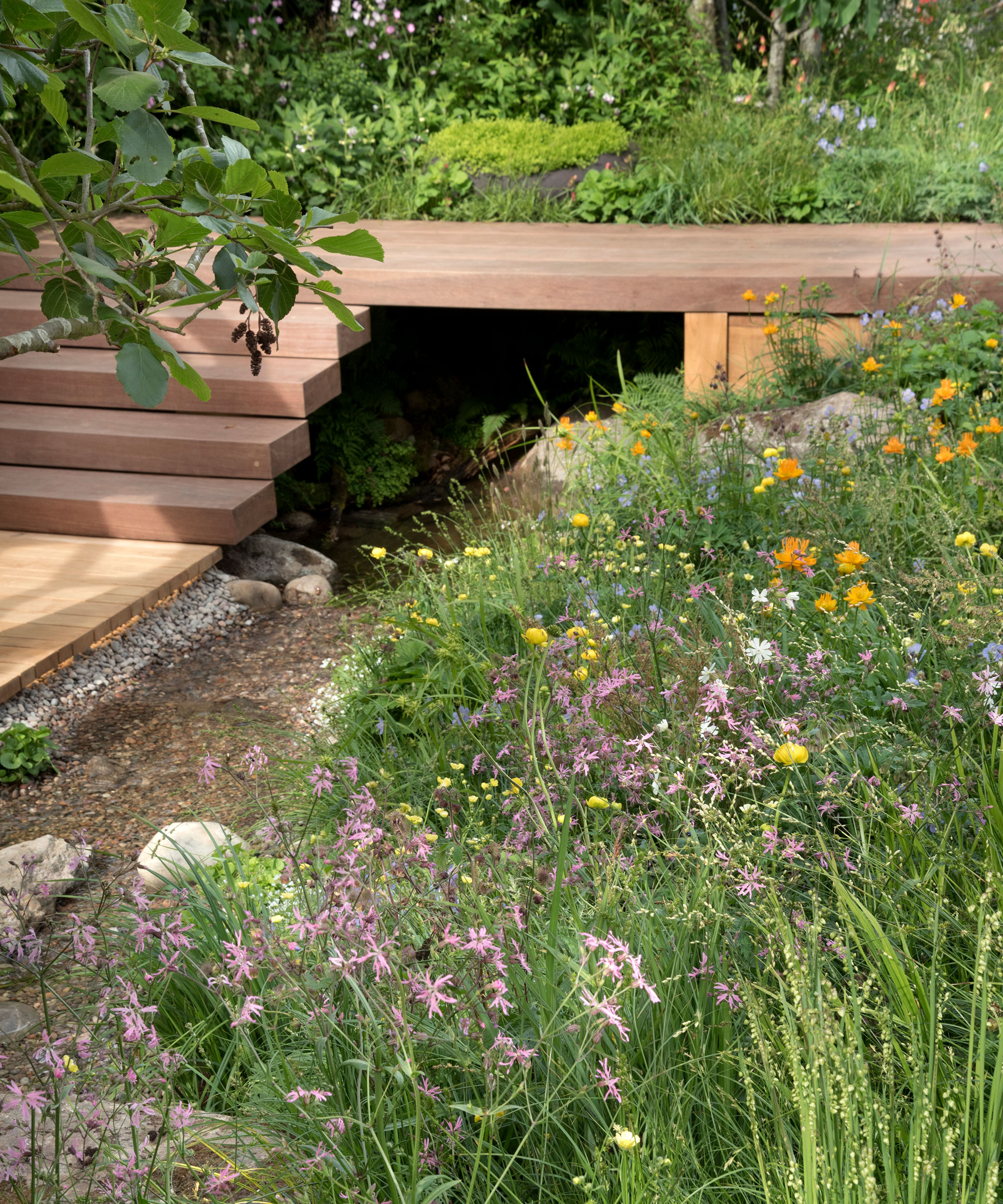
With a raised deck at ground level, a solution can be to add drainage around the deck, not just to the deck itself. Mark Lumpkin says: 'You can add a gravel bed underneath a raised deck and adjustable deck supports to influence where water flows.'
Landscaping expert Eduard Negodenko agrees, and says: 'You can install a gravel trench or French drain along the perimeter to absorb excess moisture.' This is a lot of work, but it can save you from removing all of the boards in your existing deck.

Eduard is the Managing Director of Avanti Landscaping, a landscaping company.
Correct drainage is vital all over the yard. French drains are usually touted as the best solution, but there are a few French drain alternatives that can be a much better option.
Sign up to the Homes & Gardens newsletter
Design expertise in your inbox – from inspiring decorating ideas and beautiful celebrity homes to practical gardening advice and shopping round-ups.

As a gardens and lifestyle contributor, Alex makes sure readers find the right information to help them make the best purchase. Alex got his start in reviewing at the iconic Good Housekeeping Institute, testing a wide range of household products and appliances. He then moved to BBC Gardeners’ World Magazine, assessing gardening tools, machinery, and wildlife products.
You must confirm your public display name before commenting
Please logout and then login again, you will then be prompted to enter your display name.
-
 Lavender and vanilla custard pudding with rhubarb recipe
Lavender and vanilla custard pudding with rhubarb recipeA real crowd pleaser, this recipe both strikes nostalgic notes and feels irresistibly modern
By Alice Hart
-
 How I Host... A stunning Easter with Lucinda Chambers
How I Host... A stunning Easter with Lucinda ChambersThe fashion maven shares how she creates a stunning Easter table setting
By Francesca York